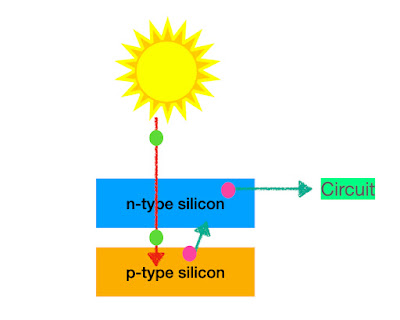Here Comes the Sun - Solar Energy
Meet the Sun:
It is also the center of our solar system.
The sun is a star that is closest to us. There are lots of stars - just look outside at night! The next closest stars are Alpha Centauri and Proxima Centauri. Each of these stars have a few planets too!
Proxima Centauri, has two planets: Proxima Centauri b and Proxima Centauri c (creative names - eh?) Neither of these planets can sustain our type of life but it is interesting to think of the number of stars out there - each with at least a few planets - maybe there is another planet with life on it too!
The sun is so important to us because it creates energy and gives us light and heat - but how exactly does it create this energy?
Well - the sun is a ball of gas - quite literally - and in the center of its ball - it has all these chemical reactions that causes energy to escape through the surface of the sun. Like nuclear fusion - the sun has its own sort of fusion! Check out this video for the detail:
Besides making energy that we enjoy on Earth - the sun also create solar flares that concern us in space!
Here's a video about solar flares: https://www.youtube.com/watch?v=eA6auUABAYw
You've seen them - in solar farms or maybe on rooftops!
Here is how Bill Nye uses them:
Video:
Solar panels have a bunch of solar cells. Each of these cells are what collects the energy from the sun to store for later.
Solar cells are made of silicon which is a semi-conductor. A semi-conductor doesn't conduct electricity easily like copper nor does it not conduct electricity at all like wood. Rather it conducts electricity under certain conditions. Solar cells are made such that there are two layers. The layer on the bottom is p-type or positive silicon such that it has a few less electrons. The top layer is n-type or negative silicon such that it has too many electrons. This stays in this state with this unbalanced electron loads until something happens to the system.
When light arrives with its amazing photons which are particles of light energy. These photons (the green dots in the image below) cross into the p-type layer where they give their energy to the electrons in the p-type layer so that the electrons can cross the barrier to where the n-type electrons are. But there are too many electrons there so they flow out of the circuit bringing their energy with them!
There are lots of great experiments to do to see the power of the sun in action!
We built a solar oven and melted chocolate chips (or you can make a s'more): https://redtri.com/smores-science-project-a-sweet-conclusion/
We tested out how much faster ice melted on black paper due to the paper absorbing the sun's energy: http://www.green-planet-solar-energy.com/solar-energy-kids-4.html
Then we did some shadow tracing but this post had a lot of great ideas of how to turn shadows into art: https://kidsactivitiesblog.com/137133/how-to-make-shadow-art-with-kids/
And we had to do a fun craft too: https://spaceplace.nasa.gov/sun-paper/en/
Enjoy!






